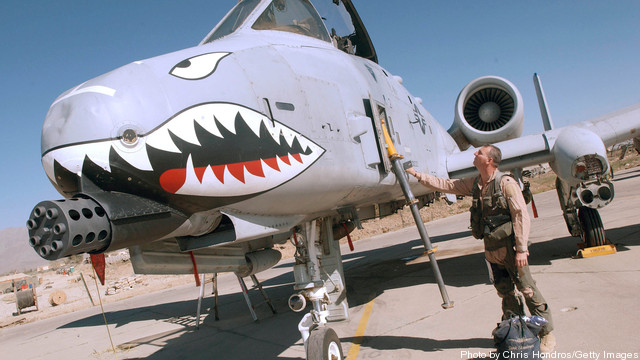
WASHINGTON: Congressional supporters can heave a sigh of relief with word from Air Force Chief of Staff David Goldfein that the ugly and effective A-10 will keep flying through 2021. But Goldfein seemed to make pretty clear that the plane will probably be retired after that because Close Air Support missions can be carried out by a mix of weapons, including the Army’s High Mobility Artillery Rocket System (HIMARS) and Air Force F-16s, B-1s, B-2s and F-35s.
When 2021 rolls around, “we’ll have a dialogue within the department about what we do then,” Goldfein said. “We’ll get this right if we can move from a platform discussion to a family of systems discussion that says, we have everything from B-1s to Apaches and HIMARS in the Army, and the job of the air component commander is to knit these together so one plus one equals three.”

Gen. David Goldfein
Former Sen. Kelly Ayotte, who spearheaded the effort to save the A-10, is now gone from Capitol Hill. She basically argued that the A-10 could provide more accurate and more reassuring fire in close-in fights. However, Goldfein, who led Central Command’s air forces, told reporters at a Defense Writers Group breakfast this morning that when he divvied up the Close Air Support mission he sent Predators to regions where he needed persistence, B-1s where he needed speed of response, range and the ability to strike repeatedly, and F-16s and F-15s to the rest. Terrain and distance from air bases dictated his assignments, he said. A-10s were limited by range, speed and persistence, he noted.
The Air Force’s top uniformed leader also indicated that the F-35 review ordered by Defense Secretary Jim Mattis was unlikely to result in a smaller number of Lockheed Martin’s F-35As being bought by the Air Force. The service, far and away the largest buyer of the F-35, plans to buy 1,763 A models and Goldfein gave no indication that would change. Instead, he said the more F-35As the service can buy, the more quickly it can replace fourth generation aircraft like the F-16, and the F-15 — let alone the A-10.
“What we don’t need is a lot of turbulence in the program right now,” Goldfein said, to either the Air Force, the Navy, the Marines, or the program’s foreign partners. He also said that the Air Force would recommend it buy additional F-35As in the 2017 supplemental spending bill, although he said it might not be the top priority.
Navy jet trainer fleet operations remain paused after engine mishap
One week after the incident, a Navy spokesperson says the service is continuing to assess the fleet’s ability to safely resume flight.


























